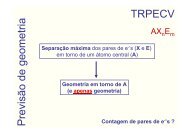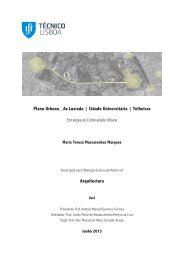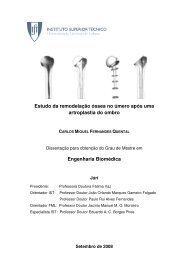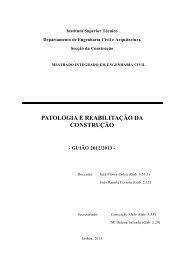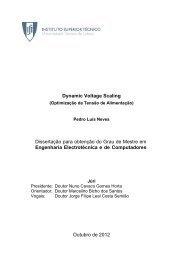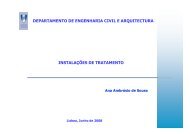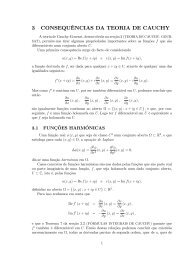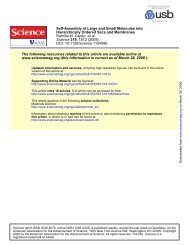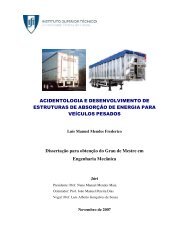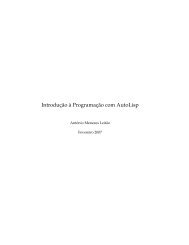dissertacao.pdf
dissertacao.pdf
dissertacao.pdf
You also want an ePaper? Increase the reach of your titles
YUMPU automatically turns print PDFs into web optimized ePapers that Google loves.
2.1.2 Solovay-Strassen Test<br />
This is the primality test suggested by the RSA team for generating the primes<br />
p and q. It is based on the following theorem, due to Euler 1 :<br />
Theorem 9. If p is an odd prime number, and b ∈ {1, ..., p − 1} such that<br />
(b, p) = 1 then: <br />
b<br />
∼= b<br />
p<br />
p−1<br />
2 (mod p) (29)<br />
So the idea of the test goes as follows: given an integer N whose primality<br />
we want to check, we choose a random integer b such that 0 < b < N and check<br />
(b, N). If the greatest common divisor is different from one, we found a factor<br />
of N so N is composite. If it is 1, we verify the congruence: if it fails, then we<br />
know that N is composite. If it is true, then there is a positive probability that<br />
N is prime.<br />
Like the FPT, this test only gives a reliable output when it proves composite-<br />
ness because like with the FPT, there are composite numbers which will satisfy<br />
the congruence for some bases. However, there are no composite numbers which<br />
will satisfy the congruences for all the bases like the Carmichael Numbers do<br />
for the FPT. In this way, the Solovay-Strassen test is a much better test than<br />
FPT. The following result states this:<br />
Theorem 10. Let N be an odd composite. Then there is<br />
an element b ∈ ZN : (N, b) = 1 such that:<br />
<br />
b<br />
≇ b<br />
N<br />
N−1<br />
2 (mod N) (30)<br />
So a composite number N can be a pseudoprime for some bases b, but it<br />
will never be for all of them. Therefore, if we run the test using all integers up<br />
to N as bases, we will be sure about N’s primality. But do we really need to<br />
use all of them? The next theorem tells us about the number of bases that, for<br />
a given composite N, actually satisfy the congruence:<br />
Theorem 11. Let N be an odd composite. Then at least half of the integers b<br />
co-prime to N in {1, ..., N − 1} satisfy:<br />
<br />
b<br />
≇ b<br />
N<br />
N−1<br />
2 (mod N) (31)<br />
1 a<br />
In this section ( ) refers to the Legendre Symbol<br />
b<br />
23



